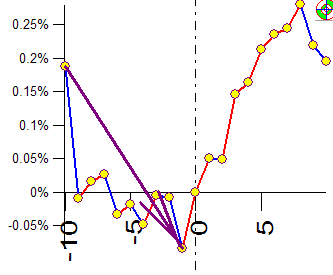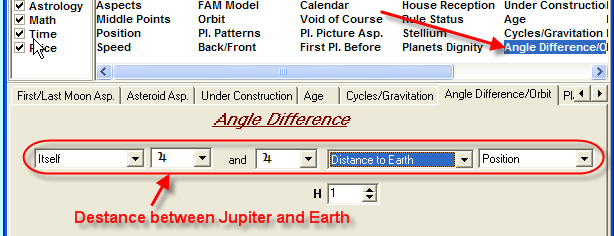
Perigee, Apogee and their influence on the stock market
Case study
written by Sergey Tarassov
These are the definitions for perigee and apogee I have found in the Internet ( http://www.astro.uu.nl/~strous/AA/en/verschijnselen.html).
"A planet is in its perigee when the planet is closest to the Earth. That means that the planet was further away just before and just after that moment. When a planet is in its perigee then that planet appears largest in the sky (seen through a telescope).
...
A planet is in its apogee when that planet is furthest from the Earth. That means that the planet was closer just before and just after that moment. When a planet is in its apogee then that planet appears smallest in the sky and the least bright."
In this article I will demonstrate how to conduct the research regarding perigee and apogee with Timing Solution software. I will provide the research for the planet of Jupiter using these three financial instruments:
Dow Jones Industrial 1885-2006
Corn price 1949-2006
Gold price 1975-2006
Let's start with Dow Jones Industrial Index (DJI).
First of all, I would like to remind that perigee/apogee
describes the distance between Jupiter (in our example) and the Earth. Let us calculate and watch how this distance changes in time.
In SuperSearch module, you need to define this event:

Calculate it:
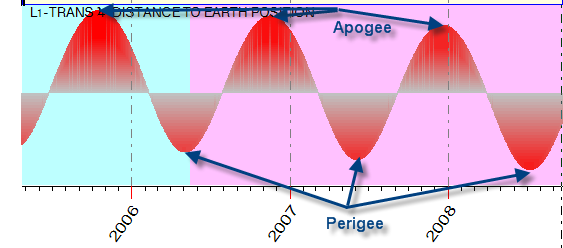
This diagram shows how the distance between Jupiter and the Earth changes within four years. These waves are caused mostly by the Earth revolving around the Sun. To see the influence of Jupiter, we should look at this picture in a bigger time span:
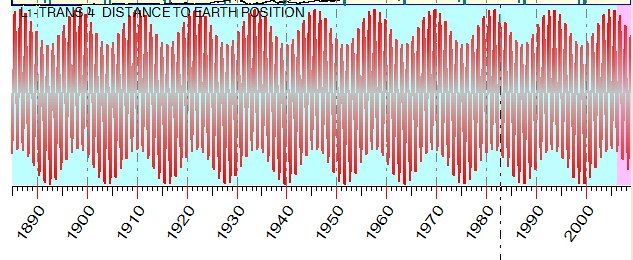
The Earth rotation here is presented by a cycle that is very close to the usual annual cycle. Also, you can see a 12-year cycle; this is Jupiter.
Let us analyze what could happen to DJI when Jupiter reaches the furthest distance from the Earth, i.e. Jupiter is in its Apogee.
To do that, fill out the SuperSearch form this way:
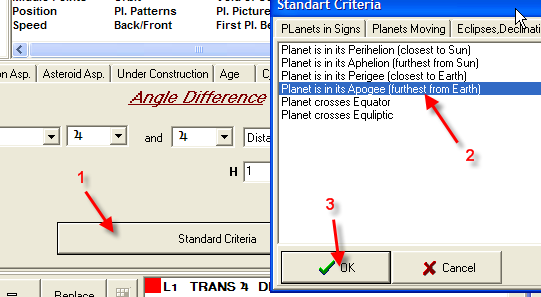
Calculate the Efficiency Test for this event clicking on this
button ![]() .
.
You will get:
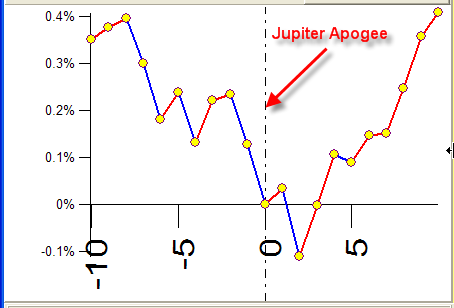
This diagram definitely shows that the Dow Jones Industrial index drops down a week before Jupiter reaches its Apogee. After that, when Jupiter's distance to the Earth decreases and Jupiter becomes brighter, the DJI goes up.
We can confirm this fact statistically as well:
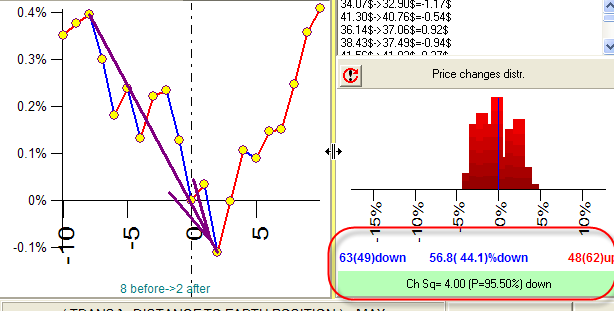
You see that the week before this phenomenon the price went down 63 times against 48 up. The chi square statistic shows that this result is not occasional with 95% probability.
It is interesting to note that Jupiter's Perigee has no effect on DJI. In other words, the Dow Jones Industrial index is very sensitive to the furthest position of Jupiter. When Jupiter is closer to the Earth (it means that Jupiter's gravitation is higher), the DJI has no reaction to this phenomenon.
Now we will analyze the Jupiter's influence on corn prices.
For Jupiter in Apogee, the Efficiency Test looks:
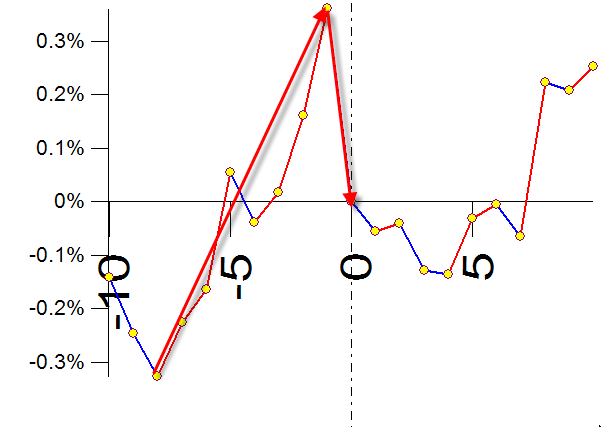
You see the week before Jupiter reaches its Apogee, the corn price starts rising. But - one day before this phenomenon, we have a sharp drop (30 down against 14 up).
The Perigee point has no affect on corn (as for DJI).
For Gold price, we have no influence at Jupiter's Apogee, while some weak influence presents from Perigee point:
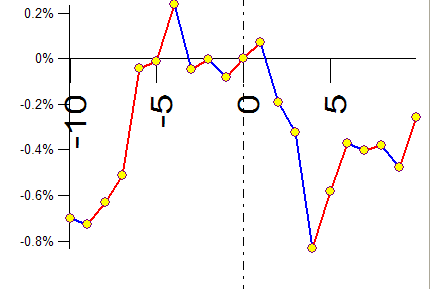
There is a small drop in gold price around this phenomenon.
This is just a case study as a part of "Study" project to demonstrate how to conduct this type of research. You can provide it for other planets.
Also you can provide this research for Perihelion and Aphelion points, i.e. the distance between analyzed planet and the Sun:
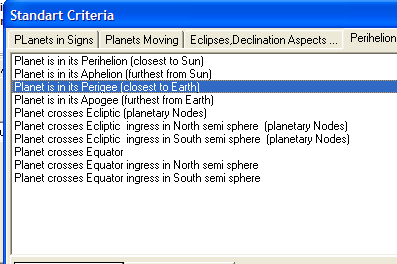
Also pay attention on events related with planetary nodes, i.e. the moments when planet crosses the Ecliptic plane. For example, this is the Efficiency Test calculated for DJI for the moment when Venus crosses the Ecliptic ingressing into South semi sphere:
